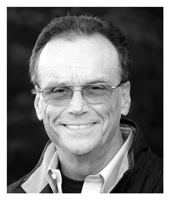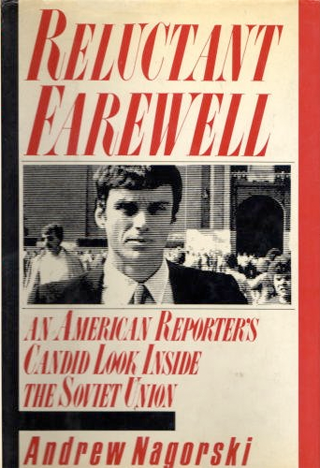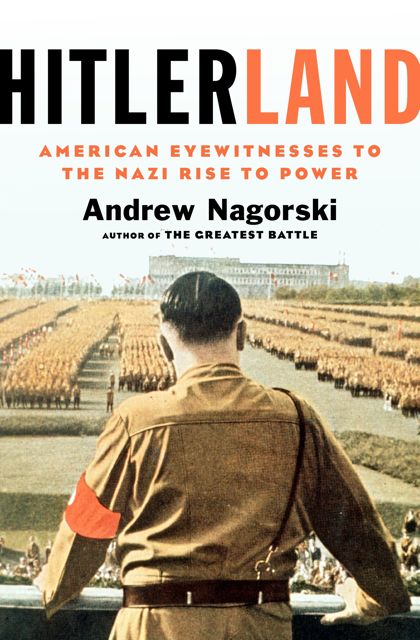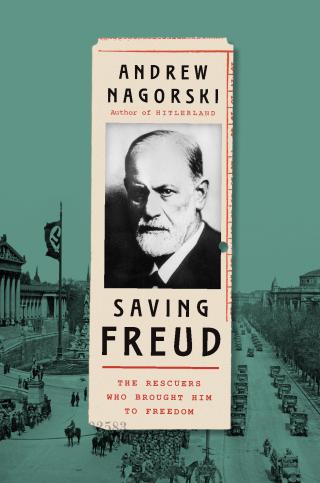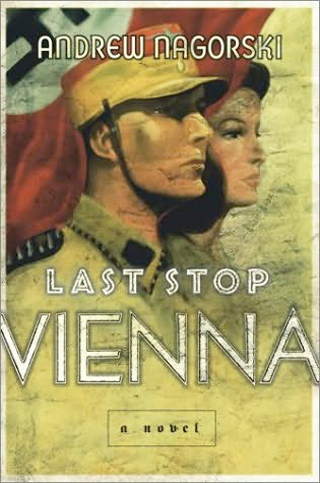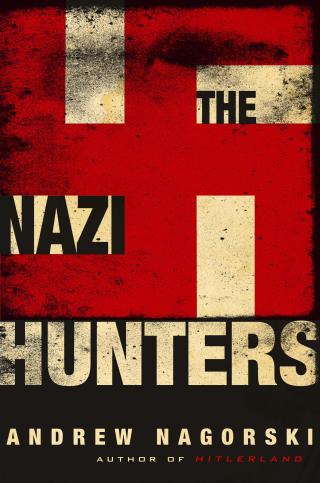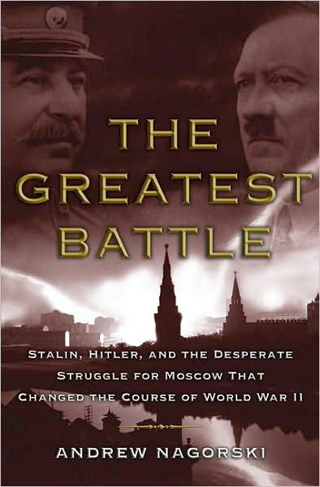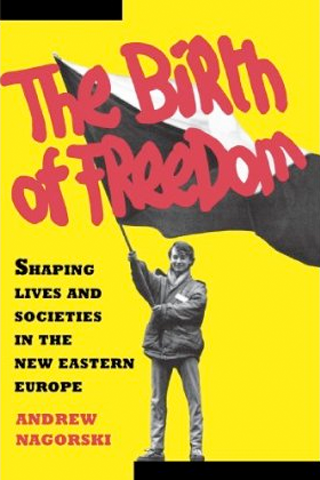Although he lived more than a century ago, Sigmund Freud abides. Despite the magazine features and nonfiction bestsellers that regularly proclaim him a charlatan, a reactionary, an intellectual dead end, or simply “dead,” we live in a world fundamentally shaped by his legacy. We accuse one another of “projecting”; we laugh—uncomfortably or with knowing glee—when someone else’s speech slips; we read novels and speculate about the author’s childhood, love life, and traumas; and we struggle not to think too hard about our more embarrassing dreams. If anything, the anxious protests (“I don’t believe in Freud, but …”), like the apparently inexhaustible need to ritually slay Freud the Bad Intellectual Patriarch in print, reflect his durability, and our anxieties, in a quintessentially Freudian way. Why would people feel so compelled to disavow him, after all, if Freud, like the repressed, didn’t always return?
Freud is dead, as more than a few have quipped, because Freud is everywhere. Or as W.H. Auden put it, in an obituary poem, “to us he is no more a person / now but a whole climate of opinion.” As a stand-in for a body of work (the English Standard Edition of his writings—which doesn’t include his letters—runs 24 volumes), as the Father of Psychoanalysis, and as a metonymy for a suite of still-disquieting claims about aggression, sexuality, and the unconscious dimensions of human behavior in general, “Freud” endures, overdetermined, signifying far more than just a name.
But Sigmund Freud was an actual flesh-and-blood human being all the same. He loved dogs (more on this later), regularly took his six children to forage mushrooms (blowing a little whistle to summon them to inspect handsome specimens), and burned through a truly prodigious quantity of cigars (more on this, too). As both a physician and a pioneering scientist, he worked tirelessly, published his failed cases (a practice rare among researchers today), and repeatedly revised his most foundational theories from the ground up, no matter the controversies and professional schisms that ensued. He was also self-contradictory, eminently capable of error, and could be by turns grandiose and petty, as quite a few would-be disciples learned to their dismay. But more than that: Freud, whom the philosopher Paul Ricoeur dubbed a “Master of Suspicion” for his ruthless skepticism toward Enlightenment rationality and Victorian taboos, was also prone to misapprehension and self-delusion even as he laid bare the willful illusions of others.
Never was this more the case than during the last years of his life, when Freud seemingly dithered in Nazi Austria, even as others fled and encouraged him to do likewise. “Freud should have been uniquely qualified to understand the dark forces propelling his world to mass murder and destruction,” observes veteran journalist Andrew Nagorski. “Why had Freud allowed himself to be trapped in this extremely perilous situation? Why had he failed to leave Vienna earlier when it would have been relatively easy for him to do so?” Nagorski’s excellent new book, Saving Freud: The Rescuers Who Brought Him to Freedom, tackles precisely this question, offering partly a narrative of Freud’s last years; partly a group biography of the patients, colleagues, and collaborators who served as his “rescue squad” in 1938; and partly a portrait of a city and a world on the brink of disaster.
A former bureau chief for Newsweek and the author of numerous popular books on World War II, Nagorski mixes the pacing of a historical thriller (think Alan Furst, but nonfiction, and starring therapists instead of spies) with a meditation on the limits of insight and what it means to be attached to a specific place and to live in a given moment in time. He shows Freud—and, more crucially, those around him—navigating the gaps between abstract awareness of danger and personal decisiveness, against the backdrop of historical events unfolding in real time. The result is hard to put down, poignant, and distressingly timely. Because if Freud himself, so attuned to the dark undercurrents of human behavior and so critical of the false security offered by our wishful illusions, proved unable to think clearly even as his country became unrecognizable around him and as nightmare after nightmare became real, what are our chances now?
Sigismund Shlomo Freud was born in the town of Freiberg, now Příbor, Czechia, in 1856, to a petit bourgeois family. His first years were spent in Moravia, a province of an empire that no longer exists. That polity, the Austrian Empire, was atypical for its era, and can seem stranger still to us today. First an absolutist monarchy, and then, after 1867, a constitutional dual monarchy in union with Hungary, the empire was the second-largest state in continental Europe, its second-biggest in population, and an economic powerhouse, boasting a national health insurance system, mandatory accident insurance, and, by the close of the century, a massive, state-funded postal, telegraph, railway, and electricity infrastructure. Overwhelmingly Roman Catholic but multireligious, with large populations of Protestants, Eastern Orthodox, Muslims, and Jews, it was multiethnic and multilingual, too, with nine official languages and an official version of its national anthem for each. As Nagorski observes: “It was a recipe that also depended on a built-in willingness, by rulers and subjects alike, to tolerate the ambiguities, contradictions, and tensions inherent in such a relatively enlightened multinational, multicultural arrangement. This was particularly true for that somewhat amorphous group of people who identified as Austrians—and not simply as Germans who happened to live in Vienna or elsewhere.”
Freud grew up in this world, and came to identify and situate himself in its terms. His family moved to Vienna when he was only four, and while his childhood memories of the empire’s cosmopolitan capital were unhappy, his ties to the city would prove almost lifelong. The young Freud responded to his family’s relative poverty by developing a zeal for study, growing cold toward his father’s religiosity, and eventually changing his name. Yet even in the empire’s cosmopolitan and dynamic heart, amid nominally meritocratic and tolerant institutions, Freud struggled against the limitations of class and widespread antisemitism. His dream of a career in research in biology came to nothing, and he faced discrimination after switching to medical school.
Only after studying with neurologists and psychologists abroad, in Berlin and Paris, and publishing breakthrough research on a new treatment for hysteria (what clinicians today would call conversion disorder), did his prospects change; soon he and his “talking cure” were at the center of a new global movement, an entirely new discipline of research, clinical practice, and humanistic speculation. Nagorski narrates this story quickly and capably, hitting the highlights, from Freud’s disastrous dalliance with cocaine (after first seeing it as a miracle drug, he quit following the tragic death of a friend) to his courtship of Martha Bernays, a German woman to whom he would remain married for 53 years (some happier than others).
Unlike those who would prefer to view Freud as a solitary genius, Nagorski understands Freud in large part through the personal and professional relationships that sustained and ultimately saved him. First among these was with Ernest Jones (1879–1958), a dapper Welsh physician who stumbled across Freud’s work in medical school and “came away with a deep impression of there being a man in Vienna who actually listened with attention to every word his patients said to him.” Jones promptly taught himself German and in 1908 traveled to Austria in order both to hear the Master lecture in person and to pursue the first systematic translations of his writing into English.
Jones rubbed shoulders with H.G. Wells, George Bernard Shaw, and D.H. Lawrence. He was also the object of accusations of sexual misconduct by several young female patients—accusations that he insisted were products of transference, and for which he was regularly exonerated, but which nonetheless saw his career shift from the U.K. to Canada and the United States and back again. Jones would thus become a co-founder of the American Psychoanalytic Association, founder of the British Psychoanalytical Society, the longest-serving president of the International Psychoanalytical Association, and the first editor of The International Journal of Psychoanalysis; he is also credited as the first to use the term “rationalization” in the sense of a defense mechanism.
Jones would be one of the few colleagues to maintain a generally unified front with Freud on matters of theory and institutional politics throughout his life. But with the advent of World War I, he and Freud found themselves on different sides, with different nationalistic commitments and temperamental dispositions. “If there is ever to be any salvation of the world from these nightmares it will surely be psycho-analysis that will point the way!” Jones enthused early on. Yet the war’s indifferent power politics, industrial-scale killing, and fierce nationalist passions also seemed, as many analysts and others at the time observed, dramatic confirmation of Freud’s views. The slaughter of 20 million people grotesquely buttressed his insistence that conscious rationality co-exists with aggressive unreason and his skepticism toward naïve narratives of inevitable social and technological progress. For Freud, the war presented a case study of how civilization, like sanity, was a tenuous achievement—a fragile, complex system that required ongoing maintenance, compromise, and care.
The members of the Freud household were themselves not above various forms of nationalist chauvinism. “All my libido is given to Austro-Hungary,” wrote Freud to Jones, whose confidence in an Allied victory led Freud to chide him as a “real Anglo.” The Freud children cheered the Austrian nobility as they passed in their carriages, and Martha remained a strident supporter of the German imperial family, too. Their eldest son, Martin, enlisted, joining thousands of other Jews in continuing a long and illustrious history of service in the Austrian army, and served gallantly in Russia and Italy. But Freud also condemned the war as “at least as cruel, as embittered and implacable, as any that preceded it.” For him, the conflict was bestial nihilism: “It tramples in blind fury on all that comes in its way, as though there was no future and no peace among men after it is over.” The most Freud let himself hope was that the enormous conflict would yield a “mourning” that would run its course and, just possibly, be followed by a restoration of civilization “perhaps on firmer ground and more lastingly than before.”
But the war’s toll was immense. In 1918, Martin was wounded, captured, and then confined to an Italian POW camp; only months later, the empire itself fell. The previously dazzling and polyglot metropole of Vienna became merely the capital of Austria, a tiny and economically ravaged rump state whose awkward geography was made up mostly (but not exclusively) of German speakers. Humiliated on the battlefield, this new nation mourned its 1.2 million war dead and reckoned with the hundreds of thousands still missing or in POW camps abroad, all while its economy collapsed. Freud admired U.S. President Woodrow Wilson’s Fourteen Points, and put faith in his oft-repeated promises of a secure and equitable peace. Versailles and its emphasis on punitive reparations from defeated powers disgusted Freud, guaranteeing “a legacy of embitterment” which he had predicted would inevitably lead to yet another war.
There were more personal tragedies and terrors, too. Freud’s darling daughter Sophie died of influenza in 1920, aged only 26. “For years I was prepared for the loss of our sons,” wrote Freud. “Now it is our daughter; as a confirmed unbeliever I have no one to accuse and realize that there is no place where I could lodge a complaint.” Sophie’s four-year-old son, Heinz, died in 1923. As grief compounded grief, Freud was devastated, lamenting that “everything had lost its value.” And in 1923, Freud was first diagnosed with a carcinoma in his palate, the cancer that would eventually kill him, although not before no fewer than 33 operations on his face and jaw, a series of prostheses (he called one “The Monster”), and years of near-constant pain. During this period, Freud preemptively wrote out his own death announcement, leaving the date and specifics blank.
It would be fair to ask: Even before we get to the Anschluss, how did Freud survive all this?
As Nagorski documents, Freud figuratively “worked through” pain and mourning by working through it, literally. “I cannot face with comfort the idea of a life without work,” proclaimed Freud, “In the words of King Macbeth, let us die in harness.” He wrote more than ever, completely overhauling his prior theories of mind and memory in light of the suffering of “shell-shocked” war veterans (1920’s Beyond the Pleasure Principle); penning classic “anthropological” texts like The Future of an Illusion (1927) and Civilization and Its Discontents (1930) (on the origins of religion and the role of guilt, shame, and aggression in social bonds, respectively); and engaging in a public correspondence with Albert Einstein (Why War? [1932]).
And he took on as many patients as he could, seeing some pro bono—like the penniless erstwhile Russian aristocrat, Sergei Pankejeff, known as the “Wolf Man.” Jones sent Freud American and British patients, who paid “hard currency, two guineas or ten dollars an hour, for his services—a princely sum in that impoverished era.” He took language lessons in order to conduct the sessions in English. Such patients were vital to Freud, both because the Austrian currency suffered chronic instability, and because they brought into his circle a new coterie of remarkable personages—the remainder of Nagorski’s “rescue squad.”
Of course, Freud had always boasted numerous followers, and formed networks of clinical professionals, admirers, and supporters. But the interwar years saw him become the center of an exceptional constellation of globe-trotting, larger-than-life associates. William Christian Bullitt Jr. (1891–1967) was a Philadelphian with grand political ambitions, a depressive streak exacerbated by a multitude of psychosomatic digestive ailments, and a tendency to say too much at the wrong time. Born into wealth and trained at Yale and Harvard Law School, Bullitt traveled Europe and Russia as a foreign correspondent, and undertook an official mission to negotiate with Lenin and other Bolshevik leaders in 1919, with the goal of normalizing the diplomatic relationships between the USSR and the United States. He spent the 1920s in Paris, where he “played tennis and went to the racetrack with Hemingway” and wrote a risqué novel about a philandering journalist that for a while outsold The Great Gatsby.
Bullitt sought Freud out as his marriage deteriorated and his mental health worsened. Bouts of depression saw him barricading himself in a hotel room and experiencing suicidal ideation. First Freud’s patient in the 1920s, in 1930 Bullitt also became his collaborator, co-writing a dubious psychobiography of Woodrow Wilson. Like Freud, he had put tremendous faith in Wilson, telling him, “You’ve made yourself the leader of everyone in the world who wants real peace.” And also like Freud, Bullitt was painfully disabused of his admiration. He resigned from Wilson’s staff after the administration refused to take his recommendations on building ties with the Soviets, and he fulminated against the punitive outcome of Versailles: “This isn’t a treaty of peace, I can see at least eleven wars in it.” The two men bonded over their shared hatred, diagnosing Wilson as a submissive masochist with a “Christ-complex,” this despite Freud’s previous vows never to weaponize psychoanalysis as a tool to publicly pathologize living politicians.
The book itself went unpublished until 1966, just before Bullitt’s death, and is generally considered a train wreck, but Bullitt’s personal treatment by Freud was more successful. Bullitt went on to serve as U.S. ambassador in Moscow and then Paris, and maintained close ties with Freud, becoming one of the only people allowed to address him as just “Freud,” rather than “Herr Professor” or “Herr Doktor.”
While Bullitt represented a quintessentially American type—relatively new money, always hustling, and mercurial—the other members of Freud’s “rescue squad” covered very different bases. A bona fide Old World aristocrat, Marie Bonaparte was a great-grandniece of Napoleon I, an heir to the Monte Carlo Casino fortune, and, through marriage, styled Princess George of Greece and Denmark. Fluent in three languages and impeccably educated, Bonaparte had spent a childhood in the shadow of her emotionally withdrawn father, suffered through a deeply unhappy marriage, and pursued a succession of affairs with a series of prime ministers, authors, and other luminaries that left her unsatisfied both emotionally and sexually. Self-identifying her problem as “frigidity” (she was anorgasmic), she simultaneously plunged into writing novels about frustrated romance while rigorously studying the latest scientific research on the clitoris. Before undertaking a risky surgical procedure on hers, she came to Vienna in search of “the penis and orgiastic normality.”
Although Freud was unsuccessful at resolving her problem, Bonaparte’s enthusiasm for psychoanalysis proved limitless. Soon enough, she was delivering psychoanalytic papers and generously donating to support Vienna’s struggling International Psychoanalytic Press (IPV) and the analytic movement in general. Freud and Bonaparte became close friends, writing remarkably intimate letters to each other. “In my private life, I am a petit bourgeois,” Freud confessed in one; in others, he complained about his cancer treatments and suggested some sexual dysfunctions of his own (“there are a few things that don’t work anymore”). “You yourself, dear Father, perhaps do not feel all your greatness,” she wrote. “You belong to the history of human thought like Plato, let us say, or Goethe.” Bonaparte was also responsible for kindling Freud’s love of dogs, chows specifically. Freud went on to have several, and they became a fixture even in his consulting room. Writes Nagorski of one, likely “Jofi”: “On one occasion, she was left out of the room and started scratching the door. Freud let her in, and she lay down on the rug and promptly started licking her private parts. Unable to get her to stop, Freud declared: ‘It’s just like psychoanalysis.’”
Others in “the rescue squad” were less exalted in stature and came (quite literally) from closer to home. Max Schur was a Jewish internist who had undergone psychoanalysis, and who became the Freud family doctor. And closest of all was Freud’s youngest daughter, Anna (1895–1982). She became at once her father’s caretaker, changing and cleaning “The Monster” (Martha wouldn’t); his most devoted student; his analytic patient (an unthinkable arrangement today); and ultimately the loyal successor he had sought for so long. She represented Freud at conferences that he was too sick to attend, delivered analytic papers of her own (like “Jealousy and the Desire for Masculinity” in 1925), and pioneered the practice of child analysis.
“If she really should go away,” Freud wrote of Anna, “I should feel as deprived as I do now, and as I should do if I had to give up smoking.” The point is underscored since, by this point, Freud’s nicotine habit was somewhere around 20-plus cigars a day. But the contemplation of Anna’s “going away,” or at least turning her libido elsewhere, was also something that preoccupied her father for other reasons. Writing to Lou Andreas-Salomé—another intimate correspondent—Freud worried that Anna had “no sexual life.” “What will she do without her father?” Marie Bonaparte, for her part, thought Anna “a vestal,” ever-virginal, wholly devoted to her father.
But here we arrive at yet another configuration of the question that rightly obsesses Nagorski: of what we see, choose to see, or refuse to recognize, even when evidence is right in front of us. Because Anna Freud was not terminally solitary, but in fact partnered for most of her life with one Dorothy Burlingham. The granddaughter of Charles Tiffany (the jeweler and founder of Tiffany & Co.), Burlingham had fled marriage to a manic-depressive and suicidal surgeon to seek treatment from Freud senior. She eventually moved into the same building as the Freuds, her children and domestic staff in tow, just two flights up and with a direct phone line between her bedroom and Anna’s. She and Anna effectively set up a miniature school on analytic principles for her children, and Burlingham eventually became a child analyst herself. The two would go on long walks in the Wienerwald, where they bought a cottage together, and where Dorothy would take the elder Freud in her luxurious Model T. Freud saw the arrangement as “Our symbiosis with an American family (husbandless), whose children my daughter is bringing up analytically with a firm hand.” Dorothy and Anna traveled as a pair to Italy and elsewhere, later co-founded a clinic for disadvantaged children in London, and would cohabit for the rest of their lives.
Such were the dramatis personae of the Freud circle, with relationships new and old forged as the world once more began to change, and Europe lurched, as if in thrall to its own irrational repetition compulsion, toward nightmare.
The remainder of Nagorski’s book, if not quite its bulk, follows the movements of our idiosyncratic cast of characters while toggling back and forth between familiar, and ever more ominous, historical events. They react, plan, and plan again as events proceed, from various milestones on Hitler’s rise to power to the assassination of Austrian Chancellor Engelbert Dollfuss to the annexation of Austria into “Greater Germany” in 1938 and beyond. Nagorski keeps the pacing tight and, without spoiling too much, narrates moments rich in incident and detail. Everyone who is not Freud realizes that the situation is serious and only getting worse, and they all contribute, in various true-to-type ways, to keeping him safe as the fascist thuggery kicks off in earnest.
When Nazis first come to the Freud apartment in 1938 to confiscate any “improperly acquired” funds, Martha asks them to stow their rifles in an umbrella stand and have a seat at the table, and she takes cash out of the family safe for them. Martin manages to hide compromising documents even as brownshirts manhandle and threaten to shoot him; he bribes another to let him leave with one particularly incriminating cache. Marie Bonaparte rushes to Vienna, to sit in her finery blocking the stairs up to Freud’s apartment and to smuggle Freud’s papers and cherished antiquities to the Greek Embassy in her skirts. Bullitt appeals directly to President Roosevelt and has an embassy car with its flag parked in front of Freud’s door. Schur provides Martin and Anna with suicide pills, just in case, and refuses to leave with his family until the Freuds themselves get out of Austria, too.
Until the very last moment, Freud seems to have remained “in denial.” He despised the Nazis, but clung to the belief that their movement would never succeed.
But throughout, until the very last moment, Freud seems to have remained “in denial” about what was going on around him. Freud, to be sure, despised the Germans he contemptuously called Hitlerei, but at first clung to the belief that their movement would never succeed, telling Bullitt, “A nation that produced Goethe could not possibly go to the bad.” Later, he insisted Nazism would never find traction in Austria, reassuring Bonaparte, “Our people are not quite so brutal.” Freud had few illusions about the character of Austria’s own right wing, but believed that its distinctly Catholic character meant that godless National Socialism was unthinkable. “It is only this Catholicism that protects us from the Nazis,” he insisted to Andreas-Salomé. If not that, then at least Austria would be held in check by international law. “We too will get our fascism, party dictatorship, elimination of opposition, applied anti-Semitism,” he assured Jones. “But we should retain our independence, and the peace treaty makes it legally impossible to strip minorities of their rights.” Yet each and every one of these hopes, grim or otherwise, ran aground on the bleak shores of what Freud elsewhere called “the reality principle.”
For if Freud preferred to avoid thinking too long about the Nazis, the Nazis certainly thought a great deal about Freud. Nazi propaganda relentlessly targeted “the Jewish science” of psychoanalysis, and cartoon after cartoon featured Jewish analysts in the crudest stereotypes imaginable, money-grubbing hucksters and perverts looking to sexualize children and entice pure Teutonic women onto their couches.
“Psychoanalysis is an impressive example of the fact that nothing good for us Germans can ever come from a Jew,” the Deutsche Volksgesundheit aus Blut und Boden (German Public Health From Blood and Soil) proclaimed in its August/September 1933 issue. “Even if he gave us 5% that was novel and apparently good, 95% of his doctrine is destructive and annihilating for us.” Himmler appears to have wanted the entire Freud family imprisoned; Göring appears to have dissuaded him. At a book-burning event attended by Goebbels himself, Freud’s books were cast into the flames as an announcer proclaimed: “Against the soul-destroying overestimation of the sex life—and on behalf of the nobility of the human soul—I offer to the flames the writings of one Sigmund Freud!” “What progress we are making,” Freud commented to Jones. “In the Middle Ages, they would have burnt me; nowadays they are content with burning my books.”
But Freud was far from the only analyst targeted. In Germany, the thriving Berlin Psychoanalytic Institute was purged of Jews and those sympathetic to them, renamed the German Institute for Psychological Research and Psychotherapy, and charged with “de-Judaizing” Freudian psychoanalysis and developing a psychoanalysis sufficiently robust for the Aryan psyche. Some of the institute’s staff managed to immigrate to Palestine, some even bringing their libraries with them; other books, and other staff members, were not so fortunate. “The books the formerly free German society had published, which were stored in Leipzig and included publications of the Vienna society, were confiscated. The fifteen Jewish psychoanalysts who had failed to join their numerous colleagues who had fled Germany when that was still possible soon died in the concentration camps.”
When Freud did finally decide to leave, it was almost too late. Only the pleading of Ernest Jones, who flew to Vienna in a chartered monoplane, could move him intellectually; only a direct threat to his beloved daughter and successor could move him viscerally. When Anna was summoned to Gestapo headquarters and barely managed to avoid being sent to a camp, Freud at last roused.
What ensued was a flurry of last-minute scrambles to hide books and export assets while securing the funds and paperwork to pay a Kafkaesque “Reichsfluchtsteuer”—a tax levied on Jews seeking to leave the Reich. Even with ready money from Bonaparte and Bullitt, complications multiplied. In a Europe far from friendly toward Jewish refugees, the Freud party required no less than 20 foreign visas—for the Freud family, their domestic staff, the Schurs, and sundry in-laws. Securing them from the British authorities taxed even Jones’s formidable networking skills. And finally there was the ambivalent Nazi.
In their drive to expropriate Jewish assets, the Nazis seized the Vienna publishing house, a Freud family holding, and came down hard on the Freuds to reveal any foreign assets. Anton Sauerwald was the “trustee” assigned by the party to oversee this plunder. Sauerwald was a young chemist who, as a grad student, had formed a deep affection for an older Jewish professor who subsequently died. He also was an ardent National Socialist who berated Gentiles at the publishing house for working with “Jewish pigs” and told Schur that he viewed Jews as not a “reliable element of the population,” and that they “had to be eliminated” in a situation that “might be deplorable, but [where] the end justifies the means.” Such were the contradictions of a man who would apologize for the rudeness of Gestapo by telling Anna, “What can you expect? These Prussians don’t know who Freud is,” and who—in Anna’s own testimony—became essential to the family’s escape, and more.
During his visits to the publishing house, writes Nagorski, “Sauerwald methodically read many of Freud’s works, and he found himself increasingly impressed by his erudition and theories about psychoanalysis.” Sauerwald subsequently withheld evidence of some Freud family assets from his superiors and concealed several documents that would likely have sent them to the camps. He secreted away books he was ordered to destroy, helped pack up their remaining volumes, and had them stored in the Austrian National Library, where they rode out the war in safety.
When the family finally got their visas, Freud was asked to sign a statement swearing that he had not been treated poorly. He did, and penned an addendum: “I can heartily recommend the Gestapo to everyone.” Once again, this is classic Freud—ironic to the end. We wonder, but cannot know, how much, or what specifically, he was thinking about Sauerwald at the time. We also cannot know for certain how much Sauerwald did or even could do to help Freud’s four sisters, who remained in Austria, and whom he visited later in the war and may have protected. The four died in the camps soon after Sauerwald was transferred to the Luftwaffe.
Thanks to the rescue squad, the Freuds did eventually make it to London. Settling in a little house secured by Bonaparte, Freud marveled at all the office artifacts she had secretly saved: “Everything is here again, except me.” Freud was indeed there, but also not. As ever, he worked. In 1939, he finished his final book, Moses and Monotheism, a strange and controversial work both then and now. Freud the dying refugee wrote of multiple Moseses, some Egyptian, some Hebrew, some real, some mythic, but all players in a complicated brew of murder, imposture, guilt, and idealization, a tale of forced diasporas and contorted intellectual legacies. He played with his chow, Lün, and finished translating a story by Marie Bonaparte, Topsy: The Story of a Golden-Haired Chow, about her own dog, who was dying of cancer. (One line from it: “Dogs are children that do not grow up, that do not depart.”)
Freud still met VIPs like Isaiah Berlin and Leonard and Virginia Woolf, and he sat for a portrait by Salvador Dalí. He recorded an audio message for the BBC and was filmed handing a baby some flowers. Finally, when the cancer grew too agonizing, he asked Schur to keep his promise, and the good doctor did. Back in Vienna, a despondent Anna Freud had asked her father, “Wouldn’t it be better if we all killed ourselves?” Freud’s response was simple: “Why? Because they would like us to?” But now, the man who had finally told his family that his only realistic hope was to “die in freedom” met death on his own terms.
Perhaps this is part of the answer to Nagorski’s question as to why Freud spent so long “in denial”: His denial of reality was also a refusal to alter the conditions of his inevitable death on terms that were not his. Put simply: He wanted to die at home, and held to this wish, until it came to the point that either the home was no longer his or he would be dragged to die outside it. “The center of Freud’s universe was Berggasse 19, where he and Martha had raised six children,” writes Nagorski. “It was also where he saw his patients, wrote his essays and books, and met on Wednesday evenings with the members of the Vienna Psychoanalytic Association. He was wedded to rituals like his evening walks on the Ringstrasse and visits to the city’s famed cafes, where he would smoke his cigars and read newspapers.” In other words, Freud was attached to a way of life, and to living in a particular place. He was also attached to identifying himself in certain terms. “My language is German,” he told a journalist in 1926. “My culture, my attainments are German. I considered myself German intellectually, until I noticed the growth of anti-Semitic prejudice in Germany and German Austria. Since that time, I prefer to call myself a Jew.”
But even this version of Freud was on his own terms, since he was a Jew who remained skeptical of Zionism, turned down invitations to flee to Palestine, and devoted his last work to a book on Moses that many Jews denounced as not just scandalous, but a betrayal. Above all, for as long as he could, Freud clung to a vision of himself as first and foremost a member of a cosmopolitan intellectual community and transnational enterprise of research and healing. Which was something a person like Freud could indeed be, and which was a community that did exist, right until the moment when he could no longer, and his community became one of refugees.
“Analysts are people who have learned to practice a particular art,” Freud proclaimed in one of his last essays. “Alongside of this, they may be allowed to be human beings like anyone else.” The paradox of his blind spots remains, thrown into sharper relief by Nagorski’s work. It is fair to think, as Schur would cuttingly remark, that beneath all his rationalizations, Freud more or less “forgot that Hitler was Austrian.” But then again, as Anna Freud observed many years later, “It is always easy in retrospect to know what was right, to know what should have been done, and when it should have been done.” Who of us, if we were to be in the same circumstances, and with the same commitments, can be certain that we would think more clearly, or act otherwise? Today, as hard-won rights are reversed, as precarity increases and economic crisis looms, as democracy itself seems arguably more fragile than ever, putting ourselves in Freud’s shoes perhaps also means questioning what commitments to living on our terms may be constraining us, and which illusions and attachments we cannot imagine living without.
